Getting online data to offline communities
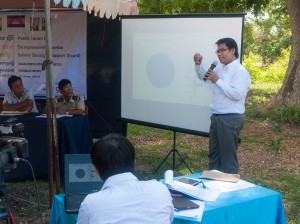
Bringing online data to a rural, offline community (photo: Kyle James)
Data journalism has opened up new ways of telling compelling stories, finding connections and creating visuals that explain important, complex issues is easy-to-understand ways.
This has become possible through the huge range of digital information now available online. While much of that information is presented online and sometimes in newspapers and magazines, what about communities who don’t have much access to the internet or even printed media?
Are these communities, often poor and rural, simply going to miss out on the results and benefits of data journalism? Not necessarily. onMedia’s Kyle James looks at a project in Cambodia that has been linking online and offline communities – with promising results.
![]() read more
read more
Think before you map: Learning from Egypt’s HarassMap
 In 2008, Ushahidi first mapped post-election violence in Kenya using information sent in by people via sms or online. Since then, thousands of organizations have used Ushahidi or other mapping tools to crowdsource information and present it on a map. The uses have been myriad, from mapping the crisis in Haiti after the 2010 earthquake to getting feeback about dangerous bike paths in Berlin.
In 2008, Ushahidi first mapped post-election violence in Kenya using information sent in by people via sms or online. Since then, thousands of organizations have used Ushahidi or other mapping tools to crowdsource information and present it on a map. The uses have been myriad, from mapping the crisis in Haiti after the 2010 earthquake to getting feeback about dangerous bike paths in Berlin.
After all, crowdsourced maps are often an easy way to put visuals on a web page and show what’s happening in places that reporters or rights activists can’t or don’t get to. But this doesn’t mean media organizations or advocacy groups can slap together an online map and people will automatically start sending reports. Many crowdsourced reporting projects are unfortunately short lived, attracting few reports and having little impact.
HarassMap has won several awards for mapping incidents of sexual harassment in Egypt. onMedia takes a look at what the organization has learned since it launched in 2010.
![]() read more
read more
Ambitious journalism projects ask public for start-up cash
Several digital news projects in Europe have received a lot of attention over the past year due to their innovative funding method. They didn’t have a big publisher financing their start-up costs, but went directly to their potential audience and raised millions for their platforms. This kind of crowdfunding might be a model for others to follow, especially as other revenue streams slow to a trickle.
The drumbeat of depressing news about print publishing’s decline has been with us for so long now that it’s now part of the general background noise. But digital sites, even the big ones, are also hurting as online ad revenues have slumped. More and more are abandoning the “it’s free on the internet” philosophy and setting up paywalls, with some success.
But what about the new kids on the block? Those start-ups might have the drive and ideas, but aren’t the New York Times, which has enough clout to convince people to pay to access unlimited content.
Two European newcomers think they might have found a solution. Within a year, a Dutch online news platform called De Correspondent, and a similar German project, Krautreporter, managed to raise millions of dollars through crowdfunding campaigns. They wanted to launch sites following a new business model, and in a sense, to remake online journalism. In fact, Krautreporter declared on its blog: “Online journalism is broken. We can fix that.”
![]() read more
read more
Innovative journalism and advocacy projects
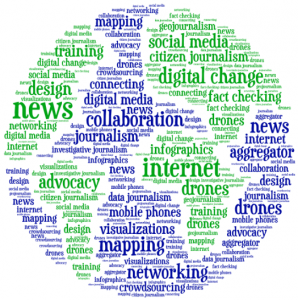 The rapid rise of mobile phones, the Internet and above all, social media is making it easy for even small media organizations and advocacy groups to create journalism networks or develop innovative digital projects that have an impact. From documenting the disappearance of trees in the Amazon rainforest to giving a voice to the illiterate in India or connecting journalists covering Colombia’s conflict, onMedia gives you a snapshot of interesting projects from around the world.
The rapid rise of mobile phones, the Internet and above all, social media is making it easy for even small media organizations and advocacy groups to create journalism networks or develop innovative digital projects that have an impact. From documenting the disappearance of trees in the Amazon rainforest to giving a voice to the illiterate in India or connecting journalists covering Colombia’s conflict, onMedia gives you a snapshot of interesting projects from around the world.
![]() read more
read more
Inside the Za’atari refugee camp in Jordan
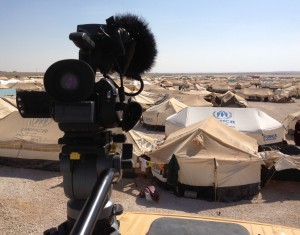 It may be considered a “temporary” home, but the sprawling Za’atari camp for Syrian refugees is now Jordan’s fourth largest city. And it’s a complex city. Not only does it provide a safe haven for people who have fled the conflict in Syria, but it requires all of the resources, services and amenities to support a large population – from water and electricity to hospitals and schools to supermarkets and cafes.
It may be considered a “temporary” home, but the sprawling Za’atari camp for Syrian refugees is now Jordan’s fourth largest city. And it’s a complex city. Not only does it provide a safe haven for people who have fled the conflict in Syria, but it requires all of the resources, services and amenities to support a large population – from water and electricity to hospitals and schools to supermarkets and cafes.
When I visited the Za’atari camp just over a year ago, there were only 30,000 refugees. That was staggering at the time. Now it is home to approximately 120,000 people.
As the conflict in Syria continues, two new media projects are documenting life inside the camp.
![]() read more
read more
NYT scrolls down the South China Sea
The New York Times “Snow Fall” multimedia feature is one that onMedia has mentioned in dispatches several times and most recently in our interview with Dr David Campbell discussing his research into visual storytelling for World Press Photo.
“What Snow Fall indicates, is that in 2013, major media organisations are catching up to what the web does and are starting to present their information in ways that are much more friendly to digital spaces, and therefore more accessible from the huge range of devices you can get online with.”
The NYT has since employed the Snow Fall scrolling style of design in a number of features and the latest one produced for the New York Times Magazine is worth a look.
![]() read more
read more
Visual storytelling and moving beyond ‘multimedia’: Part 2
 In Part 1 of Visual storytelling and moving beyond ‘multimedia’ freelance trainer Guy Degen explored some of the problems with the term “multimedia”. The post also featured the World Press Photo Academy-FotoFederatie study into multimedia produced by Dr David Campbell. In Part 2, we present an in-depth interview Guy conducted with David Campbell about his research and trends in visual storytelling.
In Part 1 of Visual storytelling and moving beyond ‘multimedia’ freelance trainer Guy Degen explored some of the problems with the term “multimedia”. The post also featured the World Press Photo Academy-FotoFederatie study into multimedia produced by Dr David Campbell. In Part 2, we present an in-depth interview Guy conducted with David Campbell about his research and trends in visual storytelling.
The full study PDF can be downloaded here.
![]() read more
read more
Visual storytelling and moving beyond ‘multimedia’: Part 1
 Multimedia. It’s a term that’s part of the global language of media and journalism and yet, why do we find it problematic to use or define?
Multimedia. It’s a term that’s part of the global language of media and journalism and yet, why do we find it problematic to use or define?
We apply the word “multimedia” in many different ways – from describing types of stories to job titles to categories of awards to sections of websites to journalism courses and workshops, and yes, even the category of this blog post.
A common starting point for discussing “multimedia” is usually something to do with stories using a combination of photography, audio, video, text and graphics.
But is that precise? Is a book with text and pictures “multimedia”? Why is a video story frequently considered to be “multimedia”? And, if we present our audience with the same story but in different versions – audio, video, or text and photos – is that also “multimedia”?
In a blog post entitled I Hate Multimedia, MediaStorm’s Eric Maierson recently summed things up by saying “multimedia” can mean anything, it just depends on whom you ask.
‘The real issue is that “multimedia” is too small. It distracts and limits the possibilities we should be embracing.’
But while “what is multimedia?” is an ongoing and contentious debate, there is a sense that media professionals want to move forward. Especially at a time when technology, such as smartphones, tablets and social media, offer new storytelling and distribution possibilities and place even more pressure on the business models of older media, and media professionals who are struggling to adapt.
So, where to next for “multimedia”?
![]() read more
read more
New York Times presents multimedia feature “Snow Fall”
Just days before I was supposed to go skiing over the Christmas holidays, my Twitter feed lit up with a lot of people talking about an avalanche story. More specifically, the New York Times web project Snow Fall – a multimedia feature about a deadly avalanche.
It’s a brilliant long format multimedia feature, showcasing in-depth reporting and using probably everything in the multimedia storytelling toolbox: text, maps, graphics, photos, video, audio and animation. And that’s just what you see and hear. Underneath the hood there is another world of programming and code. This is a long, labour intensive project.
![]() read more
read more
Web Documentaries … What Are They?
 A whole generation of young authors and directors view interactive storytelling as a promising new way of expression. They also view them as a wonder drug that will lure in tomorrow’s viewers who have grown up with multimedia content.
A whole generation of young authors and directors view interactive storytelling as a promising new way of expression. They also view them as a wonder drug that will lure in tomorrow’s viewers who have grown up with multimedia content.
The fact is web documentaries are attracting ever-increasing audiences. But what exactly is a web documentary? In this guest blog post, video journalist, blogger and web documentary producer Philipp Barth takes us through the genre.
![]() read more
read more





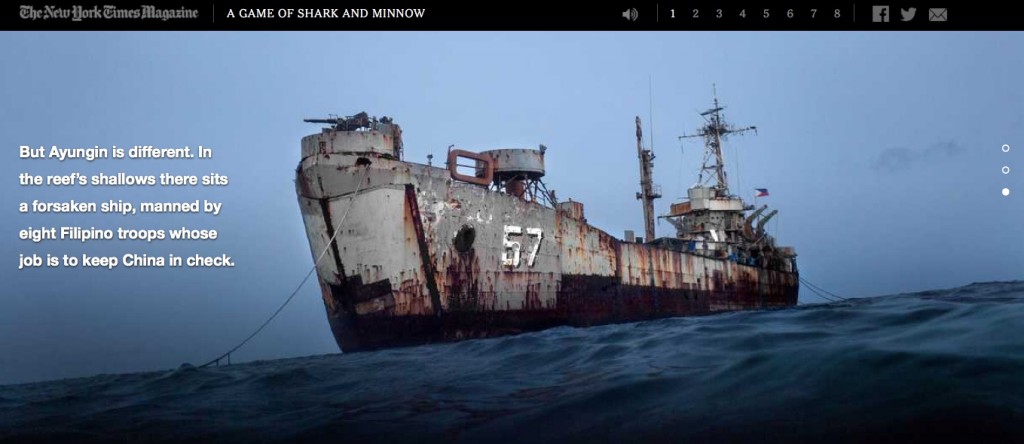
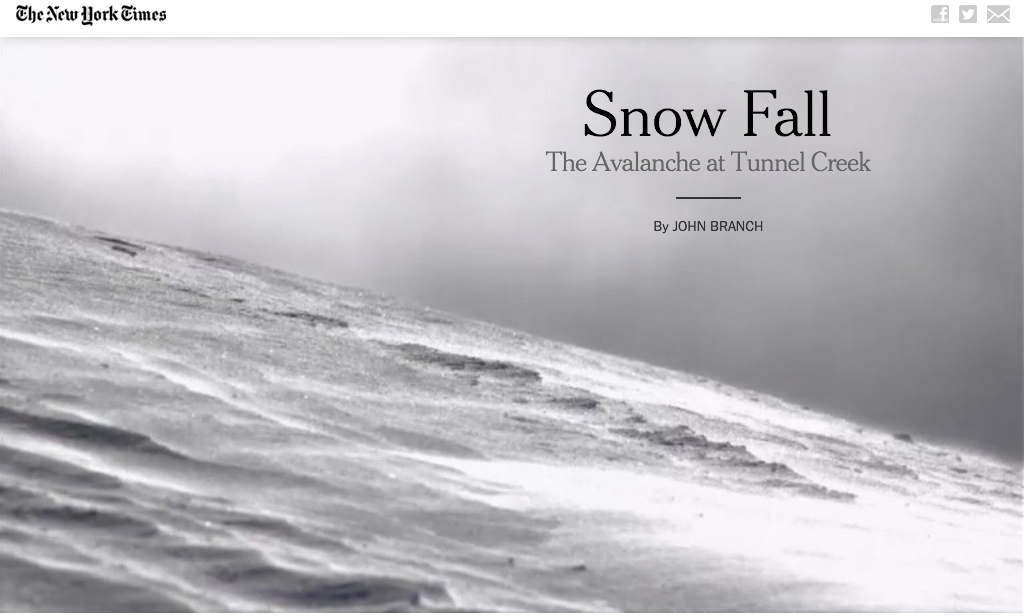




Feedback